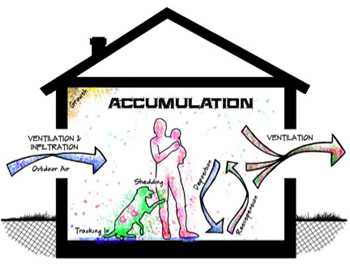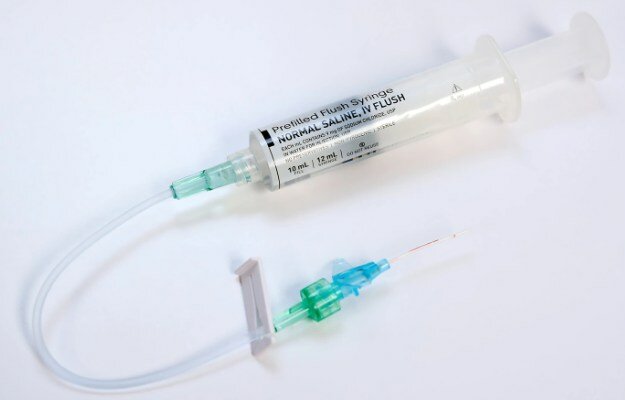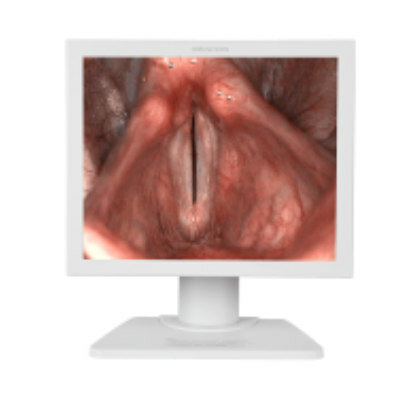Architectural Design Should Promote Microbial Exposure
|
By HospiMedica International staff writers Posted on 18 Jul 2016 |

Image: Microbe accumulation in the indoor environment (Photo courtesy of Yale University).
A new study suggests that building design and operation should encourage beneficial microbial exposure, rather than focus on the disinfection of transmittable, toxic, or allergenic agents.
Researchers at Yale University (New Haven, CT, USA) sought to explore the influence that building-associated microbes have on the human microbiome. Children build a lifetime of microbial exposures through encounters with their mother's skin, breast milk, the air and surfaces in neonatal units, that first car ride home, home life and pets, daycare, and then school. And, since humans spend more than 90% of their time indoors, inhaling up to 16,000 liters of air per day, they are continuously exposed to floor and surface dust, and come into direct contact with surfaces, people, and pets.
The microbes in buildings are largely sourced from human and animal occupants and from outdoor microbes that are tracked in or enter via ventilation. They are shed from humans are dominated by skin bacteria, including high enrichments of Actinobacteria and Staphylococcaceae, and also skin-associated yeasts such as Malassezia. Pets contribute Porphyromonadaceae, Rhodocyclaceae, Pasteurellaceae, and Bacteroidetes. Due to the human-driven resuspension of dust and microbes from elevated surfaces and floors, bacterial and fungal concentrations in indoor air are often greater than those in outside air, especially in poorly ventilated buildings.
But this is not necessarily a bad thing. Growing empirical evidence links asthma protection with environmental factors known to supply a microbial exposure. In one important example, children who grow up on Bavarian or Amish farms, where homes are in close proximity to livestock, have significantly lower rates of asthma than the general, nonfarm population. This is likely because some microbes signal white blood cells to form T regulatory cells, which prevent unnecessary immune responses. Early life exposures to these microbes are important for colonizing the gut, where a significant amount of immune training occurs, playing an important role in asthma protection.
According to the researchers, the study of how building design, occupancy, and human activity impact indoor microbial communities can lead to the design of healthier buildings, and better enable studies that seek to identify the sources of beneficial and detrimental microbes. And as the identity, functions, and concentrations of beneficial microbes continue to emerge, focus must be placed on predicting how building characteristics impact building microbes, and how this ultimately shapes the human microbiome. The study was published on July 7, 2016, in Trends in Microbiology.
"One big question becomes how building design (e.g., the geographical layout, the building materials, occupancy, and ventilation) modulates microbial exposure, and our own microbiomes. As more and more beneficial microbes are identified, we--architects, engineers, and the general public--need to think about how we can facilitate our exposure to them,” said lead author Professor Jordan Peccia, PhD, of the Yale department of chemical and environmental engineering. “We can work to develop new, quantitative approaches for solving these problems--something better than our portable air filters and inhalers.”
Related Links:
Yale University
Researchers at Yale University (New Haven, CT, USA) sought to explore the influence that building-associated microbes have on the human microbiome. Children build a lifetime of microbial exposures through encounters with their mother's skin, breast milk, the air and surfaces in neonatal units, that first car ride home, home life and pets, daycare, and then school. And, since humans spend more than 90% of their time indoors, inhaling up to 16,000 liters of air per day, they are continuously exposed to floor and surface dust, and come into direct contact with surfaces, people, and pets.
The microbes in buildings are largely sourced from human and animal occupants and from outdoor microbes that are tracked in or enter via ventilation. They are shed from humans are dominated by skin bacteria, including high enrichments of Actinobacteria and Staphylococcaceae, and also skin-associated yeasts such as Malassezia. Pets contribute Porphyromonadaceae, Rhodocyclaceae, Pasteurellaceae, and Bacteroidetes. Due to the human-driven resuspension of dust and microbes from elevated surfaces and floors, bacterial and fungal concentrations in indoor air are often greater than those in outside air, especially in poorly ventilated buildings.
But this is not necessarily a bad thing. Growing empirical evidence links asthma protection with environmental factors known to supply a microbial exposure. In one important example, children who grow up on Bavarian or Amish farms, where homes are in close proximity to livestock, have significantly lower rates of asthma than the general, nonfarm population. This is likely because some microbes signal white blood cells to form T regulatory cells, which prevent unnecessary immune responses. Early life exposures to these microbes are important for colonizing the gut, where a significant amount of immune training occurs, playing an important role in asthma protection.
According to the researchers, the study of how building design, occupancy, and human activity impact indoor microbial communities can lead to the design of healthier buildings, and better enable studies that seek to identify the sources of beneficial and detrimental microbes. And as the identity, functions, and concentrations of beneficial microbes continue to emerge, focus must be placed on predicting how building characteristics impact building microbes, and how this ultimately shapes the human microbiome. The study was published on July 7, 2016, in Trends in Microbiology.
"One big question becomes how building design (e.g., the geographical layout, the building materials, occupancy, and ventilation) modulates microbial exposure, and our own microbiomes. As more and more beneficial microbes are identified, we--architects, engineers, and the general public--need to think about how we can facilitate our exposure to them,” said lead author Professor Jordan Peccia, PhD, of the Yale department of chemical and environmental engineering. “We can work to develop new, quantitative approaches for solving these problems--something better than our portable air filters and inhalers.”
Related Links:
Yale University
Latest Hospital News News
- Nurse Tracking System Improves Hospital Workflow
- New Children’s Hospital Transforms California Healthcare
- Noisy Hospitals Face Threat of Decreased Federal Compensation
- Orthopedics Centre of Excellence Planned for Guy’s Hospital
- Research Suggests Avoidance of Low-Value Surgical Procedures
- U.S. Federal Readmission Fines Linked to Higher Mortality
- Columbia China to Build New Hospital in Jiaxing
- Dubai Debuts Second Robotic Pharmacy Service
- Seattle Hospital Network Shifts Away from Overlapping Surgeries
- ACC to Launch Valvular Heart Disease Program in China
- Mortality Rates Lower at Major Teaching Hospitals
- South Australia to Inaugurate Upscale Hospital
- Raffles to Launch Second Hospital Project in China
- Research Center Tackles Antimicrobial Drugs Challenge
- Miami Cardiac & Vascular Institute Completes Expansion Project
- Hospital Antibiotic Policies Improve Prescription Practices
Channels
Critical Care
view channel
CPR Guidelines Updated for Pediatric and Neonatal Emergency Care and Resuscitation
Cardiac arrest in infants and children remains a leading cause of pediatric emergencies, with more than 7,000 out-of-hospital and 20,000 in-hospital cardiac arrests occurring annually in the United States.... Read more
Ingestible Capsule Monitors Intestinal Inflammation
Acute mesenteric ischemia—a life-threatening condition caused by blocked blood flow to the intestines—remains difficult to diagnose early because its symptoms often mimic common digestive problems.... Read more
Wireless Implantable Sensor Enables Continuous Endoleak Monitoring
Endovascular aneurysm repair (EVAR) is a life-saving, minimally invasive treatment for abdominal aortic aneurysms—balloon-like bulges in the aorta that can rupture with fatal consequences.... Read more
Wearable Patch for Early Skin Cancer Detection to Reduce Unnecessary Biopsies
Skin cancer remains one of the most dangerous and common cancers worldwide, with early detection crucial for improving survival rates. Traditional diagnostic methods—visual inspections, imaging, and biopsies—can... Read moreSurgical Techniques
view channel
Robotic Assistant Delivers Ultra-Precision Injections with Rapid Setup Times
Age-related macular degeneration (AMD) is a leading cause of blindness worldwide, affecting nearly 200 million people, a figure expected to rise to 280 million by 2040. Current treatment involves doctors... Read more
Minimally Invasive Endoscopic Surgery Improves Severe Stroke Outcomes
Intracerebral hemorrhage, a type of stroke caused by bleeding deep within the brain, remains one of the most challenging neurological emergencies to treat. Accounting for about 15% of all strokes, it carries... Read morePatient Care
view channel
Revolutionary Automatic IV-Line Flushing Device to Enhance Infusion Care
More than 80% of in-hospital patients receive intravenous (IV) therapy. Every dose of IV medicine delivered in a small volume (<250 mL) infusion bag should be followed by subsequent flushing to ensure... Read more
VR Training Tool Combats Contamination of Portable Medical Equipment
Healthcare-associated infections (HAIs) impact one in every 31 patients, cause nearly 100,000 deaths each year, and cost USD 28.4 billion in direct medical expenses. Notably, up to 75% of these infections... Read more
Portable Biosensor Platform to Reduce Hospital-Acquired Infections
Approximately 4 million patients in the European Union acquire healthcare-associated infections (HAIs) or nosocomial infections each year, with around 37,000 deaths directly resulting from these infections,... Read moreFirst-Of-Its-Kind Portable Germicidal Light Technology Disinfects High-Touch Clinical Surfaces in Seconds
Reducing healthcare-acquired infections (HAIs) remains a pressing issue within global healthcare systems. In the United States alone, 1.7 million patients contract HAIs annually, leading to approximately... Read moreHealth IT
view channel
Printable Molecule-Selective Nanoparticles Enable Mass Production of Wearable Biosensors
The future of medicine is likely to focus on the personalization of healthcare—understanding exactly what an individual requires and delivering the appropriate combination of nutrients, metabolites, and... Read moreBusiness
view channel
Philips and Masimo Partner to Advance Patient Monitoring Measurement Technologies
Royal Philips (Amsterdam, Netherlands) and Masimo (Irvine, California, USA) have renewed their multi-year strategic collaboration, combining Philips’ expertise in patient monitoring with Masimo’s noninvasive... Read more
B. Braun Acquires Digital Microsurgery Company True Digital Surgery
The high-end microsurgery market in neurosurgery, spine, and ENT is undergoing a significant transformation. Traditional analog microscopes are giving way to digital exoscopes, which provide improved visualization,... Read more
CMEF 2025 to Promote Holistic and High-Quality Development of Medical and Health Industry
The 92nd China International Medical Equipment Fair (CMEF 2025) Autumn Exhibition is scheduled to be held from September 26 to 29 at the China Import and Export Fair Complex (Canton Fair Complex) in Guangzhou.... Read more













